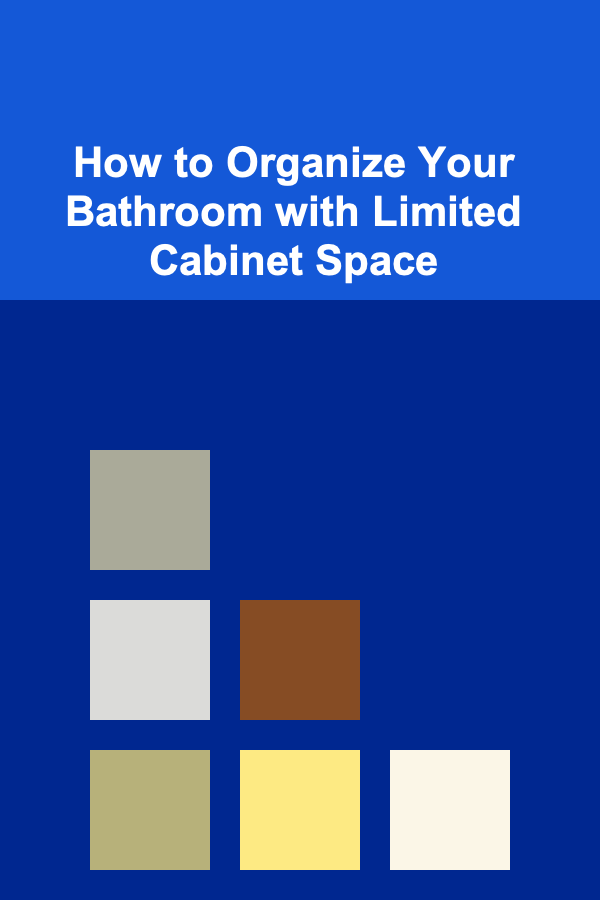
Choosing the Right Multi-Tool for Your Bike Rides: A Comprehensive Guide
ebook include PDF & Audio bundle (Micro Guide)
$12.99$5.99
Limited Time Offer! Order within the next:

A bicycle multi-tool is an indispensable companion for any cyclist, whether you're a seasoned professional or a casual weekend rider. It's a compact, portable toolbox that can help you address a wide range of mechanical issues on the road or trail, potentially saving you from being stranded far from home. However, with so many multi-tools on the market, choosing the right one for your needs can be a daunting task. This comprehensive guide will walk you through the key considerations, features, and types of multi-tools to help you make an informed decision and select the perfect tool for your cycling adventures.
Why Carry a Multi-Tool? The Importance of On-the-Go Bike Repair
Before diving into the specifics of choosing a multi-tool, it's crucial to understand why carrying one is so important. Here's a breakdown of the key benefits:
- Quick Fixes: Minor adjustments like tightening bolts, adjusting brakes, or indexing gears can be done quickly and easily with a multi-tool, preventing small problems from escalating into major mechanical failures.
- Flat Tire Repair: Most multi-tools include tools necessary for changing a flat tire, such as tire levers, a chain tool (for removing and reattaching the chain, which may be necessary to get the wheel off the frame in some cases), and potentially even a CO2 inflator adapter.
- Preventative Maintenance: Regularly checking and tightening bolts can prevent components from loosening over time, extending their lifespan and ensuring a safer and more enjoyable ride.
- Self-Sufficiency: A multi-tool allows you to be self-sufficient on your rides, reducing your reliance on others for assistance. This is especially important for long rides, remote trails, or when riding alone.
- Peace of Mind: Knowing that you have the tools to address common mechanical issues can provide peace of mind and allow you to focus on enjoying your ride.
Imagine being miles from home with a loose handlebar stem or a misaligned derailleur. Without a multi-tool, you might be forced to walk your bike for a significant distance. A multi-tool empowers you to take control and address these issues yourself, ensuring a smoother and safer cycling experience.
Key Considerations: What to Look for in a Bike Multi-Tool
Choosing the right multi-tool involves considering several key factors. Here's a detailed breakdown of the most important aspects to evaluate:
1. Essential Tools: Matching the Tool to Your Bike and Riding Style
The first and most important step is to determine the essential tools you need for your bike and riding style. Consider the following:
- Hex Wrenches (Allen Keys): These are the most common tools found on multi-tools and are used to tighten and loosen bolts on almost every component of your bike. Common sizes include 2mm, 2.5mm, 3mm, 4mm, 5mm, 6mm, and 8mm. Some bikes, especially older models, may use other sizes. Pay close attention to the sizes used on your specific bike.
- Screwdrivers: Both flathead and Phillips head screwdrivers can be useful for adjusting derailleurs, brakes, and other components. A medium-sized Phillips head is generally the most versatile.
- Torx Wrenches: Torx bolts are becoming increasingly common on modern bikes, particularly on disc brake rotors, stems, and other high-performance components. T25 is the most common size, but it's worth checking your bike to see if other sizes are used.
- Chain Tool: This is essential for repairing a broken chain or removing links to shorten the chain if necessary. Look for a chain tool that is compatible with your chain type (e.g., 9-speed, 10-speed, 11-speed, 12-speed). Some chain tools are more robust than others; a higher-quality tool will be easier to use and less likely to break.
- Tire Levers: These are used to remove the tire from the rim when changing a flat. Look for durable plastic or composite tire levers that won't damage your rims. Some multi-tools integrate tire levers into the body of the tool.
- Spoke Wrenches: These are used to true your wheels by adjusting spoke tension. While not essential for every ride, they can be helpful for addressing minor wheel issues on the go. Check the size of your spoke nipples to ensure the wrench fits.
- Valve Core Tool: For tubeless setups, a valve core tool allows you to remove or tighten the valve core, which can be useful for adding sealant or deflating the tire quickly.
- CO2 Inflator Adapter: Some multi-tools include an adapter for using CO2 cartridges to inflate your tires quickly. This can be much faster than using a mini pump. However, you'll need to carry CO2 cartridges with you.
- Knife or Saw: While less common, some multi-tools include a small knife or saw, which can be useful for cutting zip ties, trimming brake cables, or other miscellaneous tasks.
Consider your bike type: Mountain bikers might prioritize a robust chain tool and tire levers, while road cyclists might focus on smaller, lighter tools with essential hex wrenches and a CO2 inflator adapter. Gravel riders often need a bit of everything.
2. Quality and Durability: Investing in a Reliable Tool
The quality and durability of your multi-tool are critical. A cheap, poorly made tool can break easily, leaving you stranded and potentially damaging your bike. Here are some factors to consider:
- Material: Look for multi-tools made from high-quality materials, such as hardened steel or chrome vanadium steel. These materials are strong and resistant to corrosion. Avoid tools made from soft or brittle metals.
- Construction: The overall construction of the tool should be solid and well-made. Check for loose or wobbly components. A well-constructed tool will feel sturdy and reliable in your hand.
- Finish: A good finish, such as a chrome plating or a powder coating, can help protect the tool from rust and corrosion.
- Brand Reputation: Choose a multi-tool from a reputable brand known for producing high-quality cycling tools. Read reviews and ask for recommendations from other cyclists.
Investing a little more in a higher-quality multi-tool will pay off in the long run. A durable tool will last longer, perform better, and be less likely to fail when you need it most.
3. Size and Weight: Balancing Functionality and Portability
Size and weight are important considerations, especially if you're trying to minimize the load you're carrying. A bulky, heavy multi-tool can be cumbersome and uncomfortable to carry. However, sacrificing too much functionality for the sake of size and weight can leave you unprepared for certain mechanical issues.
- Compact Design: Look for a multi-tool with a compact and streamlined design that fits easily into your jersey pocket, saddlebag, or hydration pack.
- Lightweight Materials: Some multi-tools use lightweight materials, such as aluminum or titanium, to reduce weight without sacrificing strength.
- Prioritize Essentials: Consider which tools are truly essential for your rides and choose a multi-tool that focuses on those features. You may be able to eliminate unnecessary tools to reduce size and weight.
Strive for a balance between functionality and portability. Choose a multi-tool that includes the tools you need most often, while still being compact and lightweight enough to carry comfortably.
4. Ergonomics and Ease of Use: Comfort and Efficiency
The ergonomics of a multi-tool can significantly impact its usability. A tool that is difficult or uncomfortable to use can be frustrating and inefficient, especially when you're dealing with a mechanical issue on the side of the road.
- Comfortable Grip: Look for a multi-tool with a comfortable grip that allows you to apply sufficient force without straining your hands. Some multi-tools have textured surfaces or ergonomic shapes for improved grip.
- Easy Access: The tools should be easy to access and deploy. Avoid tools that are difficult to open or that require excessive force to use.
- Leverage: Consider the length of the tools and the amount of leverage they provide. Longer tools generally provide more leverage, making it easier to tighten or loosen stubborn bolts.
- Folding Mechanism: The folding mechanism should be smooth and reliable. The tools should lock securely into place when in use and fold away easily when finished.
If possible, try out different multi-tools in person to see which one feels most comfortable and easy to use. Read reviews to get feedback from other users about the ergonomics of specific tools.
5. Price: Balancing Cost and Value
Multi-tool prices can range from very affordable to quite expensive. While it's tempting to opt for the cheapest option, it's important to consider the value you're getting for your money. A cheap multi-tool may be made from low-quality materials, lack essential features, or break easily. Investing a little more in a higher-quality tool will provide better performance, durability, and reliability.
- Set a Budget: Determine how much you're willing to spend on a multi-tool.
- Compare Features: Compare the features and specifications of different multi-tools within your budget.
- Read Reviews: Read reviews from other cyclists to get an idea of the quality and performance of different tools.
- Consider Longevity: Think about how long you expect the tool to last. A more expensive tool that lasts for many years may be a better value than a cheaper tool that needs to be replaced frequently.
Find a balance between cost and value. Choose a multi-tool that offers the features and quality you need at a price you can afford.
Types of Multi-Tools: Choosing the Right Style for Your Needs
Multi-tools come in various styles and configurations. Here's an overview of the most common types:
1. Folding Multi-Tools: The Classic and Versatile Option
Folding multi-tools are the most common type. They typically consist of a collection of tools that fold into a compact handle. These tools are generally versatile and offer a good balance of functionality and portability.
Pros:
- Wide range of tools
- Compact and portable
- Generally affordable
Cons:
- Can be bulky compared to some other options
- Leverage may be limited on some tools
2. Mini Tools: Lightweight and Minimalist
Mini tools are designed to be as small and lightweight as possible. They typically include only the essential tools, such as hex wrenches, screwdrivers, and perhaps a Torx wrench.
Pros:
- Extremely lightweight and portable
- Ideal for racers or those who prioritize minimalism
Cons:
- Limited functionality
- May not be suitable for addressing more complex mechanical issues
3. Ratcheting Multi-Tools: Enhanced Leverage and Efficiency
Ratcheting multi-tools feature a ratcheting mechanism that allows you to tighten or loosen bolts without having to repeatedly reposition the tool. This can be more efficient and less tiring, especially when dealing with stubborn bolts.
Pros:
- Enhanced leverage and efficiency
- Can be easier to use than traditional folding multi-tools
Cons:
- Generally more expensive
- May be slightly bulkier than traditional folding multi-tools
4. Multi-Tools with Integrated Chain Tools: Essential for Chain Repairs
These multi-tools feature a built-in chain tool, which is essential for repairing broken chains or adjusting chain length. The quality and usability of the chain tool can vary significantly between different models.
Pros:
- Conveniently integrates a chain tool into the multi-tool
- Essential for addressing chain-related issues
Cons:
- The quality of the chain tool can vary
- May add slightly to the overall size and weight of the tool
5. Multi-Tools with CO2 Inflator Adapters: Quick Tire Inflation
These multi-tools include an adapter for using CO2 cartridges to inflate your tires quickly. This can be much faster and easier than using a mini pump.
Pros:
- Provides a quick and easy way to inflate tires
- Can be a lifesaver in emergency situations
Cons:
- Requires carrying CO2 cartridges
- Can be more expensive than multi-tools without CO2 adapters
Popular Multi-Tool Brands and Models
Several reputable brands offer high-quality bike multi-tools. Here are a few popular options:
- Crankbrothers: Crankbrothers offers a wide range of multi-tools known for their innovative designs and durable construction. Their models often feature high-quality steel tools and ergonomic handles. Their M series is especially popular.
- Park Tool: Park Tool is a well-respected brand known for producing professional-grade cycling tools. Their multi-tools are durable, reliable, and feature a comprehensive set of tools. Their IB series is a common choice.
- Topeak: Topeak offers a diverse selection of multi-tools, ranging from minimalist models to more comprehensive options with integrated chain tools and CO2 inflator adapters. Their Alien series is a longstanding favorite.
- Lezyne: Lezyne is known for its stylish and well-designed cycling accessories, including multi-tools. Their models often feature high-quality materials and innovative features.
- Specialized: Specialized also offers multi-tools, often optimized for use with their own bikes, but perfectly usable on others as well.
Researching specific models within these brands, reading reviews, and comparing features will help you narrow down your choices and find the perfect multi-tool for your needs.
Beyond the Multi-Tool: Essential Accessories for On-the-Go Repair
While a multi-tool is essential, there are other accessories that can complement your repair kit and enhance your on-the-go repair capabilities:
- Mini Pump or CO2 Inflator: While some multi-tools include a CO2 inflator adapter, you'll still need a way to inflate your tires. A mini pump is a reliable option, while CO2 inflators offer a faster but less sustainable solution.
- Spare Inner Tube(s): Carrying a spare inner tube or two is essential for fixing flat tires.
- Patch Kit: A patch kit can be used to repair smaller punctures in your inner tube.
- Tire Boot: A tire boot is a small piece of material that can be used to cover a large gash in your tire to prevent the inner tube from bulging out.
- Zip Ties: Zip ties are incredibly versatile and can be used for a variety of temporary repairs.
- Duct Tape: Like zip ties, duct tape can be used for a wide range of repairs, from securing loose cables to patching damaged clothing.
- Gloves: Keeping a pair of disposable gloves can keep your hands clean while performing repairs.
Consider building a comprehensive repair kit that includes these essential accessories, along with your multi-tool, to be prepared for a wider range of mechanical issues.
Practice Makes Perfect: Familiarizing Yourself with Your Multi-Tool
Having the right multi-tool is only half the battle. It's essential to familiarize yourself with the tool and practice using it before you need it on the road or trail.
- Identify the Tools: Take the time to identify each tool and understand its purpose.
- Practice Basic Repairs: Practice performing basic repairs, such as changing a flat tire, adjusting brakes, and tightening bolts.
- Watch Tutorials: Watch online tutorials or consult with experienced cyclists to learn how to use your multi-tool effectively.
- Regular Maintenance: Inspect your multi-tool regularly to ensure that all the tools are in good working order. Clean and lubricate the tools as needed.
By practicing with your multi-tool, you'll gain confidence in your ability to handle common mechanical issues and be better prepared for unexpected situations.
Conclusion: Choosing the Right Multi-Tool for Your Cycling Needs
Choosing the right multi-tool for your bike rides is a crucial step in ensuring a safe, enjoyable, and self-sufficient cycling experience. By carefully considering your needs, bike type, riding style, and the factors outlined in this guide, you can select a multi-tool that provides the essential tools, durability, and portability you need to address common mechanical issues on the go.
Remember to prioritize quality, ergonomics, and the specific tools that are most relevant to your bike and riding style. Invest in a multi-tool from a reputable brand and take the time to familiarize yourself with its features and functions. With the right multi-tool and a little practice, you'll be well-equipped to handle unexpected mechanical problems and continue enjoying your cycling adventures with confidence.
Reading More From Our Other Websites
- [Home Family Activity 101] How to Create a Puzzles Corner for Collaborative Fun
- [Organization Tip 101] What Are the Most Effective Ways to Sort and Store Toys?
- [Biking 101] Bike Transportation for Road Trips: What You Need to Know
- [Personal Investment 101] How to Invest in ETFs: A Comprehensive Guide for Diversifying Your Portfolio
- [Reading Habit Tip 101] 30-Day Reading Challenge: Transform Your Brain in One Month
- [Tiny Home Living Tip 101] Best Ways to Create a Tiny Home Garden Oasis on Limited Land
- [Personal Investment 101] Turning Deep Learning into a Profitable Business Venture
- [Small Business 101] How to Compare Small Business Insurance Quotes for the Best Coverage
- [Personal Investment 101] Earning Passive Income by Developing and Selling AI Tools
- [Mindful Eating Tip 101] How to Overcome Food Cravings by Practicing Mindful Eating in the Evening

How to Create a Family Budget and Stick to It
Read More
How to Maximize Profits by Utilizing Online Marketplaces for Buying and Selling
Read More
How to Organize Pet Supplies in Your Home
Read More
How to Organize Your Bathroom with Limited Cabinet Space
Read More
How to Turn Your Attic into a Functional and Cozy Space
Read More
How to Meditate with Reiki Energy
Read MoreOther Products

How to Create a Family Budget and Stick to It
Read More
How to Maximize Profits by Utilizing Online Marketplaces for Buying and Selling
Read More
How to Organize Pet Supplies in Your Home
Read More
How to Organize Your Bathroom with Limited Cabinet Space
Read More
How to Turn Your Attic into a Functional and Cozy Space
Read More